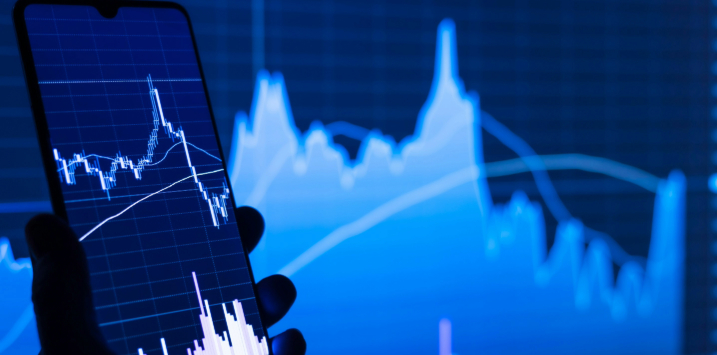
Market shifts and hidden upsides: what investors should know
Given the ructions in markets lately – addressing current market conditions, sentiment and their drivers is helpful and warranted.
It was the depth and scale of U.S. President Donald Trump’s much-anticipated tariffs that caught investors by surprise, as well as the tariffs’ calibration to trade deficits and the ambiguity around U.S. willingness to negotiate swiftly.
The announcements saw investors refer to historical precedents, which revealed that high tariffs prompt reciprocity, preceding a global trade slowdown and, ultimately, a domestic recession. Understandably, investors recalibrated their prior expectations of reliable earnings and economic growth.
Some commentators are describing the current market volatility as unprecedented. Such descriptions are attention-grabbing, but they are incorrect. As recently as 2020, the S&P 500 /ASX 200 Index fell slightly more than 35 per cent in one month. During one day in March that year, the Index fell almost 10 per cent. At the time of writing (8 April 2025), the market stands 14 per cent below its February 2025 high. It’s hardly catastrophic, and the market has recovered many times from worse bouts of anxiety.
And despite all the short-term chaos, including a possible recession that Trump’s tariffs might cause, there is a bull case that can be mounted for longer-term investors. That bull case stems from a combination of the U.S. Republican party’s admittedly ambitious end goals and the lower share prices that are currently being delivered.
The U.S. Secretary of the Treasury, Scott Bessent’s, 3-3-3 plan aims to generate annual real Gross Domestic Product (GDP) growth of three per cent, annual (sustainable) budget deficits of no more than three per cent of GDP, and domestic oil production increases of three million barrels per day. Individually, all represent ambitious goals and the achievement of none are certain.
The objective however has everything to do with making the U.S. national debt, which currently exceeds US$35 trillion, manageable.
Historically, the U.S. hasn’t paid off its debt since 1836 under Andrew Jackson. Instead, it rolls over maturing treasury securities by issuing new ones. The key to this process is maintaining market confidence in the debt’s sustainability, measured by the debt-to-GDP ratio.
While it is expected the debt will keep going up, the key is to keep the debt-to-GDP ratio down.
Currently, this ratio stands at over 125 per cent – a post-World War II peak – and is the highest in U.S. history. After WWII, it fell from 120 per cent to 30 per cent by 1980, a sustainable level akin to a manageable credit card balance. Since then, it has ballooned to today’s precarious heights.
The 3-3-3 plan seeks to reverse this trend. With three per cent real growth plus two per cent inflation, nominal GDP growth will be five per cent. The argument is that if that number exceeds deficit growth (below 3 per cent), the debt-to-GDP will gradually decline, signalling stability, boosting confidence, and keeping interest rates low.
Finally, pushing the price of oil down by producing more oil (Organisation of the Petroleum Exporting Countries (OPEC) has also agreed to drive oil prices down) has the effect of cutting Putin’s revenue and the ability to fund the conflict with Ukraine.
Importantly, the tariffs are intended to have three impacts. The first is to remedy what Trump believes are unfair trade practices and, in turn, revitalise manufacturing in the U.S. by encouraging ‘onshoring’.
Trump would also like to reduce taxes on individuals and corporations (the latter from 21 per cent to 15 per cent). Such moves would put a more-than-US$4.5 trillion hole in the budget over ten years that needs to be filled.
Finally, tariffs are believed by Trump to be a foreign negotiating tool superior to sanctions, which can inadvertently drive the formation of blocks such as BRICS (an intergovernmental organisation comprising of ten countries: Brazil, Russia, India, China, South Africa, Egypt, Ethiopia, Indonesia, Iran, and the United Arab Emirates) and push nations away from the U.S. dollar.
To date, the U.S. neoliberal (read billionaire) preference has been to offshore ‘grubby’ manufacturing in favour of investment in Intellectual Property (IP), patents, and technology. Neoliberals agree such a policy hollows out jobs for the working class. Still, they have argued the benefits are displayed in higher returns on equity and higher stock markets, which in turn results in demand for U.S. dollars by foreign investors and rewards workers through their retirement investment plans. Trump appears determined to reverse the hollowing out of jobs.
The positives
At the moment, it’s difficult to see the positives, but after the disruptions to market values – which are certain, what may emerge is a U.S. domestic capital expenditure boom as companies spend billions building manufacturing plants to produce high-value goods for both the domestic market and for exports. To be clear, I am not suggesting the outcome is certain, I am merely presenting the bull case. Already, Honda, Hyundai, and Apple have committed to spending billions to build out manufacturing in the U.S.
One of the most reliable investing aphorisms is ‘the higher the price you pay, the lower your return.’ The reverse is also true, especially if you invest in high quality and growth. Notwithstanding the uncertainty around where tariffs land and, therefore, what company growth profiles look like, bull markets have always followed bear markets.
Paying record-high prices results in lower returns. The market volatility has now delivered prices well below those records. Today, some very high-quality names in the Australian stock market have fallen between 12 per cent and 51 per cent from their one-year highs. With the right time horizon, investors who can resist emotion, stay invested, and even invest more after steep falls have historically set themselves up for very good results.